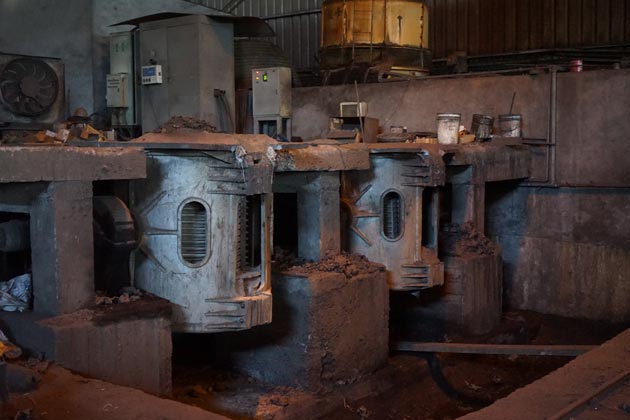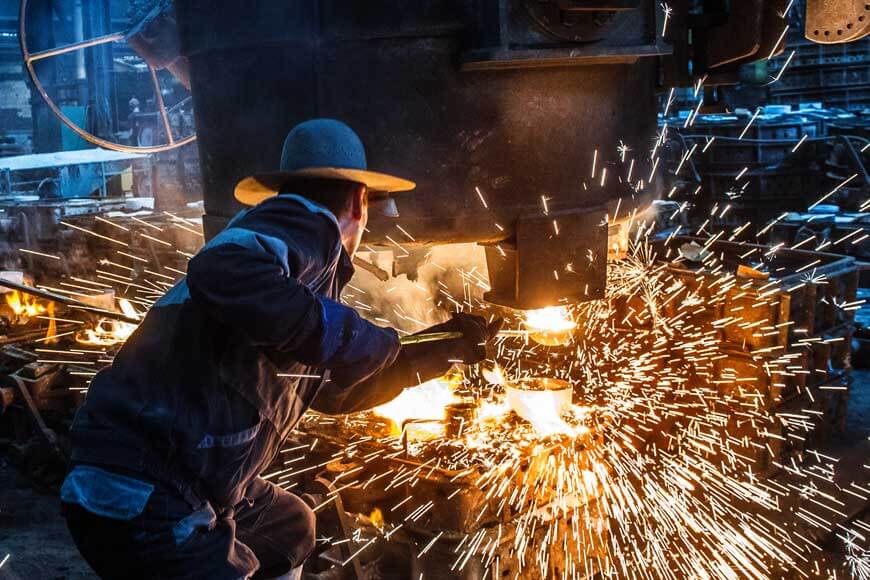Key differences between Metal Casting and other metal fabrication techniques
Discover the Ingenious Methods Made Use Of in a Metal Foundry for Superior Casting Outcomes
In today's competitive manufacturing landscape, metal foundries are significantly adopting cutting-edge techniques to enhance spreading outcomes - Metal Foundry. Advanced computer system simulations enable exact modeling of liquified metal behavior, while 3D printing makes it possible for fast production of complex mold and mildews. In addition, eco-friendly materials and automation simplify operations. These advancements assure considerable improvements in performance and quality control. The effect of these innovations on sustainability and production techniques remains to be completely explored.
Advanced Computer System Simulations in Metal Casting
Advanced computer system simulations have transformed the metal spreading procedure by boosting accuracy and efficiency. These advanced tools allow engineers to create virtual versions of cast parts, enabling them to assess and predict the actions of molten metal throughout the casting phase. By mimicing different parameters such as temperature, circulation price, and cooling rates, suppliers can recognize prospective flaws prior to physical production begins.
This positive method lowers waste and minimizes expensive errors, ultimately leading to enhanced item high quality. Additionally, simulations help with the optimization of mold layouts, guaranteeing that they satisfy the certain demands of each project. The integration of computational fluid characteristics (CFD) and limited element evaluation (FEA) more adds to the accuracy of these simulations, giving insights that were previously unattainable. As a result, advanced computer simulations have actually ended up being an essential part of modern metal foundries, significantly advancing the market's capacities.
3D Printing for Mold And Mildews and Patterns
3D printing has emerged as a groundbreaking technique for producing molds and patterns in the metal foundry industry. This technology makes it possible for the quick production of complicated geometries that standard manufacturing techniques struggle to accomplish. By utilizing additive manufacturing, foundries can produce complex designs with lowered preparations and product waste. The capacity to generate molds on need allows for greater flexibility in style models, facilitating faster prototyping and adjustments.
Furthermore, 3D printing can make use of a variety of products, including plastics and metals, customized to particular casting demands. This adaptability enhances the precision of molds, causing premium spreading end results with boosted surface area finishes. Additionally, the reduction in the number of components needed simplifies assembly procedures, better optimizing manufacturing effectiveness. As foundries remain to embrace 3D printing, they are poised to redefine industry requirements, leading the way for advancement and boosted performance in metal casting procedures.
Eco-Friendly Materials and Processes
As the metal foundry sector deals with enhancing stress to minimize its environmental impact, the fostering of environmentally friendly products and processes has actually come to be important. Foundries are currently checking out sustainable choices to typical materials, such as using bio-based binders and recycled metals. These materials not only minimize waste yet likewise lower energy usage throughout production.
In addition, developments in sand spreading techniques have actually led to using synthetic sands that are less dangerous to the atmosphere. Factories are likewise applying innovative procedures like molten metal therapy that minimizes discharges and enhances the quality of cast products.
Water-based finishings have changed hazardous solvents, advertising a much safer job setting. By integrating these environmentally friendly practices, metal foundries can considerably lower their environmental impact while preserving top quality spreading results. This change not just profits the environment however additionally straightens with the helpful hints growing customer demand for lasting production services
Automation and Robotics in Foundry Workflow
While the metal foundry market welcomes innovation, the assimilation of automation and robotics is changing procedures greatly. Automated systems enhance procedures such as mold production, metal putting, and casting completing, greatly boosting performance. Robotics facilitate the handling of hefty products, minimizing the risk of work environment injuries and making certain much safer settings.

Better, using automated assisted automobiles (AGVs) optimizes product transportation within centers, ensuring prompt shipment of parts to proper workstations. By carrying out these innovations, foundries can adjust to rising and fall demands with better agility, inevitably resulting in enhanced success and competitiveness in the market. As automation and robotics remain to evolve, they hold the possible to redefine conventional foundry practices and drive additional innovations in casting methods.
Real-Time Tracking and Top Quality Control Techniques
The developments in automation and robotics have actually led the method for a lot more innovative methods to quality control in metal foundries. Real-time tracking systems make use of advanced sensing units and information analytics to track vital specifications throughout the casting procedure. These systems continually assess variables such as stress, product, and temperature composition, making it possible for instant detection of discrepancies from developed criteria.
Quality control techniques currently include device understanding formulas that examine historic information to forecast possible issues before they happen. This proactive technique reduces waste and improves total production effectiveness. Furthermore, incorporated responses my sources loops permit quick changes, ensuring that each spreading fulfills rigorous quality demands.
The execution of digital doubles-- digital reproductions of physical possessions-- has additionally changed quality assurance, permitting engineers to replicate and maximize procedures in real-time. With each other, these cutting-edge methods greatly enhance the integrity and high quality of spreadings, establishing brand-new market standards in metal foundry procedures.
Often Asked Questions
What Kinds of Metals Are Frequently Cast in Foundries?
Commonly cast metals in foundries include aluminum, iron, brass, and bronze. Each metal displays unique homes, making them appropriate for different applications, such as vehicle parts, machinery, and creative sculptures, boosting their flexibility in production.

The length of time Does the Casting Refine Normally Take?
The spreading procedure usually takes a number of hours to days, depending on factors such as the intricacy of the mold, kind of metal utilized, and air conditioning demands. Each stage influences the total duration considerably.
What Safety Procedures Remain In Location for Foundry Workers?

How Are Defects in Castings Identified and Addressed?
Issues in spreadings are determined with aesthetic inspections and non-destructive testing methods. As soon as detected, foundry workers address them by refining processes, changing material structures, and carrying out rehabilitative measures to assure high quality and conformity with standards.
What Is the Cost Variety for Metal Casting Providers?
The cost variety for metal casting solutions usually varies in between $1 to $10 per pound, depending on elements such as product type, intricacy of the layout, and production quantity, impacting general pricing substantially.
In today's affordable production landscape, metal foundries are progressively taking on cutting-edge methods to boost spreading results. As the metal foundry sector deals with increasing pressure to minimize its environmental impact, the fostering of eco-friendly products and processes has actually ended up being vital. Foundries are currently discovering sustainable options to conventional products, such as making use of recycled metals and bio-based binders. By integrating these environmentally friendly techniques, metal foundries can considerably decrease their eco-friendly impact while maintaining top quality spreading outcomes. The improvements in automation and robotics have paved Discover More Here the means for much more sophisticated methods to quality assurance in metal foundries.